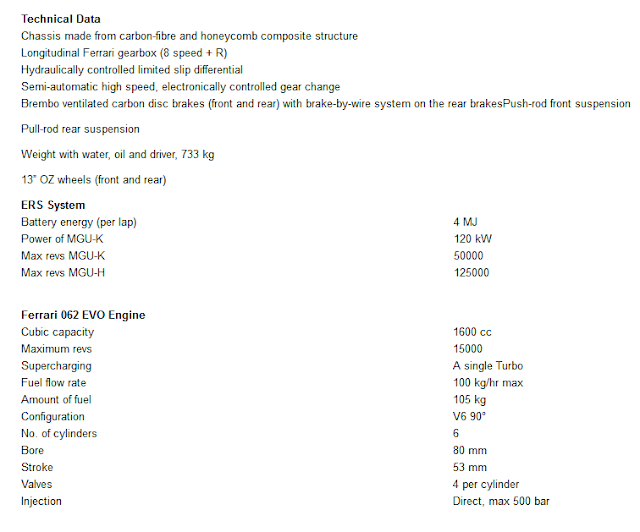Therefore the new 2018 Ferrari F1 car has been created to make the most of the experience gained last year. Compared to 2017’s SF70H, the wheelbase has been changed slightly, with the side dimensions also revised along with the cooling system.
The suspension follows the tried and tested practice of using push-rods at the front and pull-rods at the rear, however, their design has been updated based on experience gained during the first season running the wider tyres.
Cockpit protection
The most obvious element to catch the eye is the Halo, designed to protect the cockpit area. After two years of on-track testing, it has now entered the rule book. It weighs around 7 Kg, plus fittings and this has only been partly compensated for with an increase of 5 Kg – from 728 to 733 – to the minimum car weight set in the 2018 regulations.
Power Unit
The number of V6 engines that can be used over the course of the season, without incurring a penalty, continues to decrease, this year from 4 to 3. The same number applies to the turbo-compressor and MGU-H – the energy recovery system attached to the turbo – while only 2 MGU-K -the device that generates kinetic energy linked to the transmission – are allowed over the year, a figure which also applies to the electronic control unit and the batteries. Therefore those in the engine department have also based their work on these new parameters.
The programme
After it’s launch on Thursday 22nd February, the SF71H will be transported to Barcelona’s Catalunya Circuit, for a filming day on Sunday 25th, followed by the start of testing proper on Monday 26th. The first session runs to the end of Thursday 1st March, while the second test takes place at the same circuit from 6th to 9th March. Both Scuderia Ferrari race drivers, Kimi Raikkonen and Sebastian Vettel will be driving.
























No comments:
Post a Comment